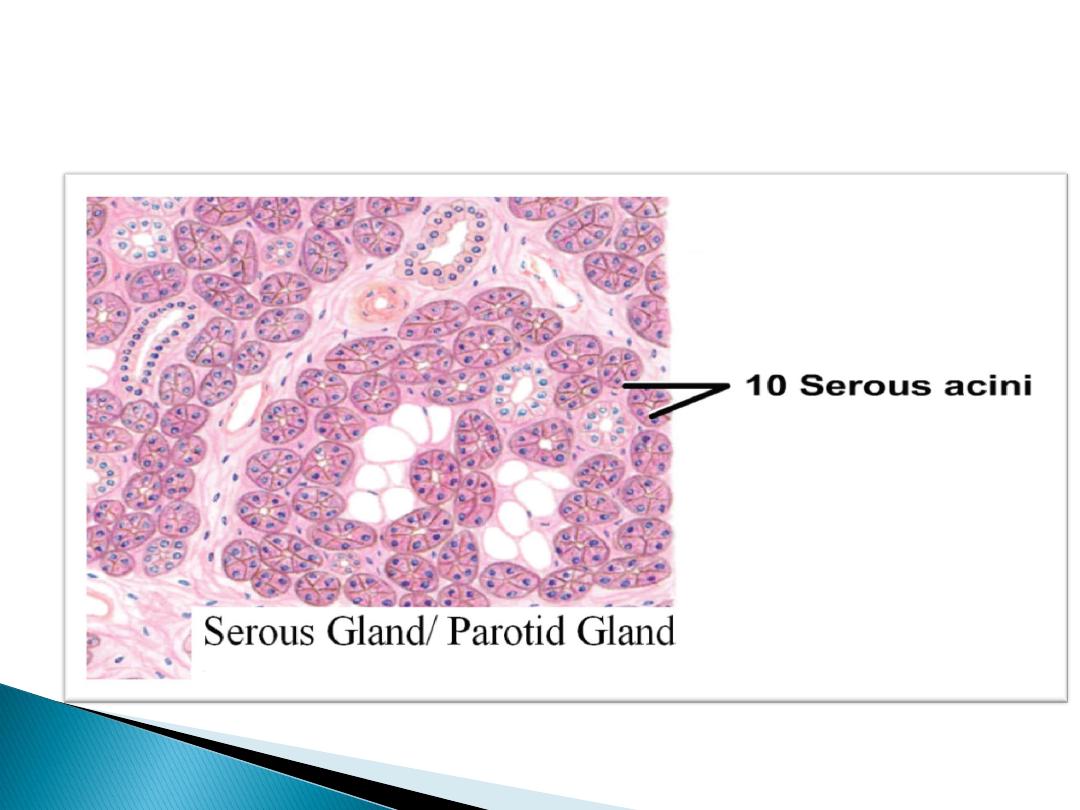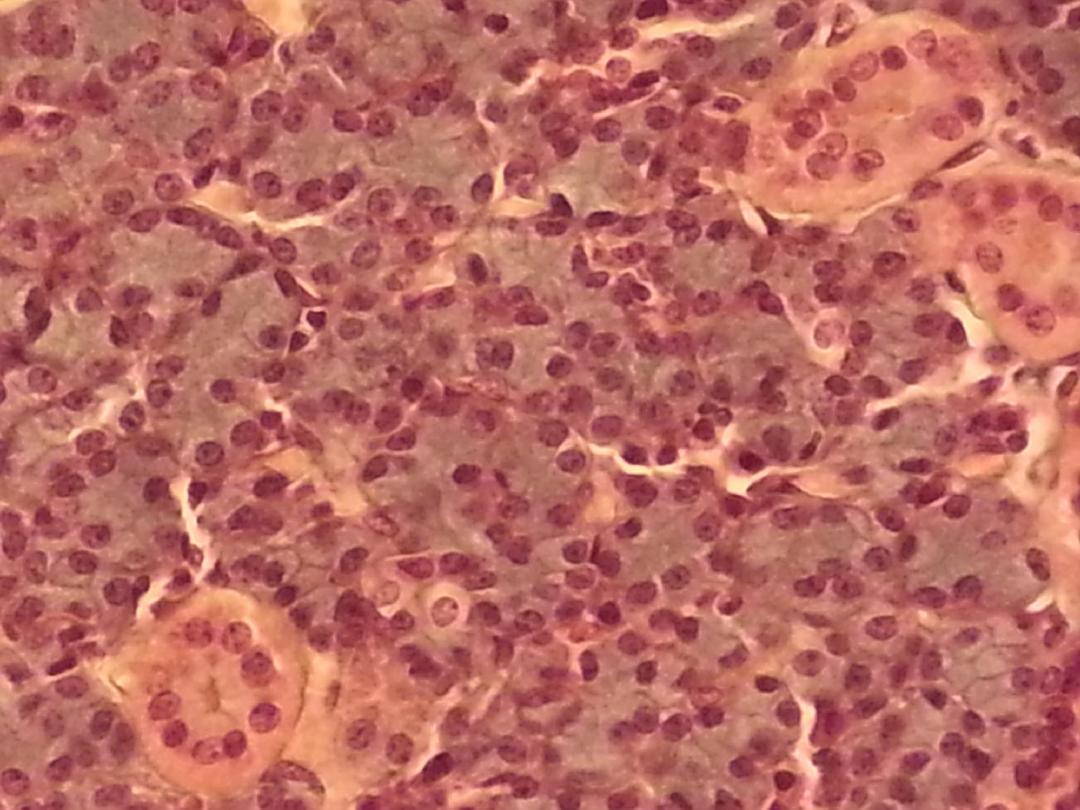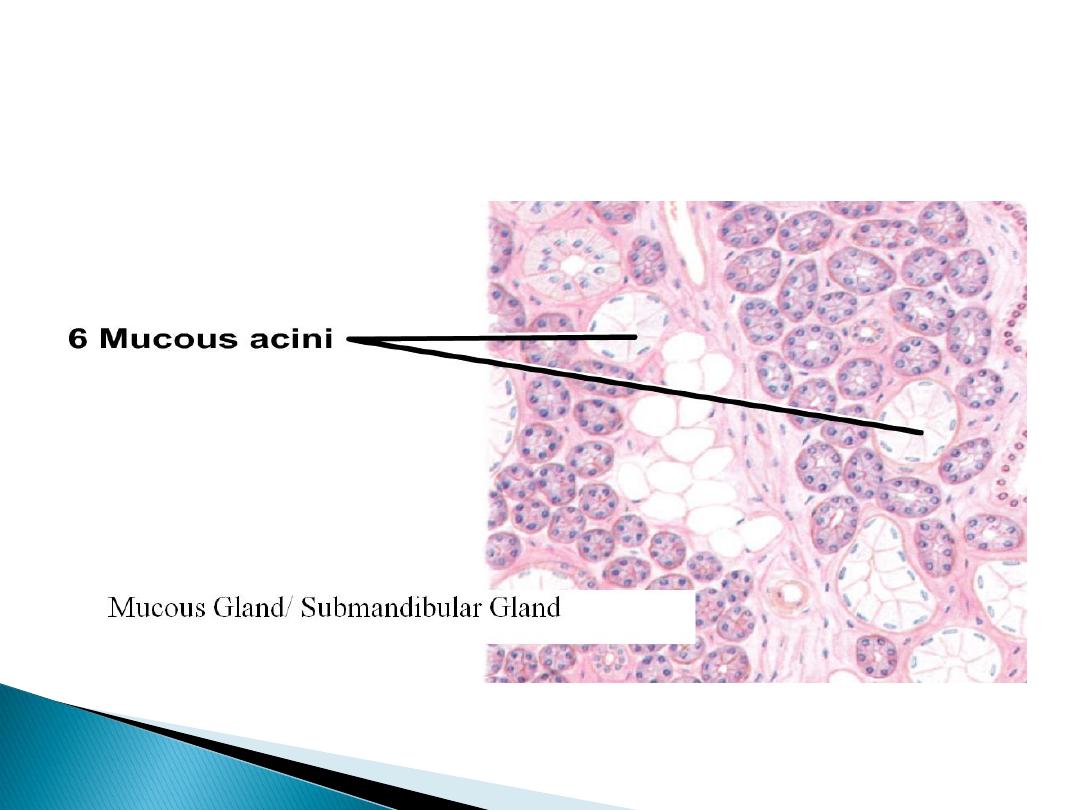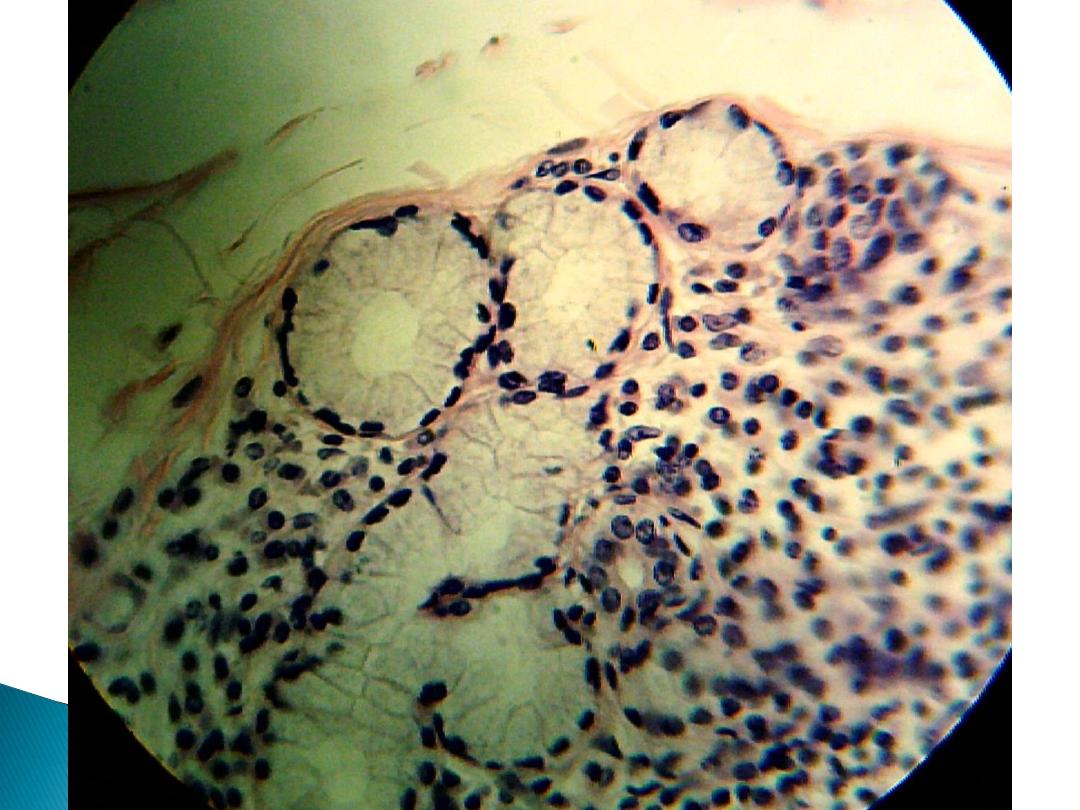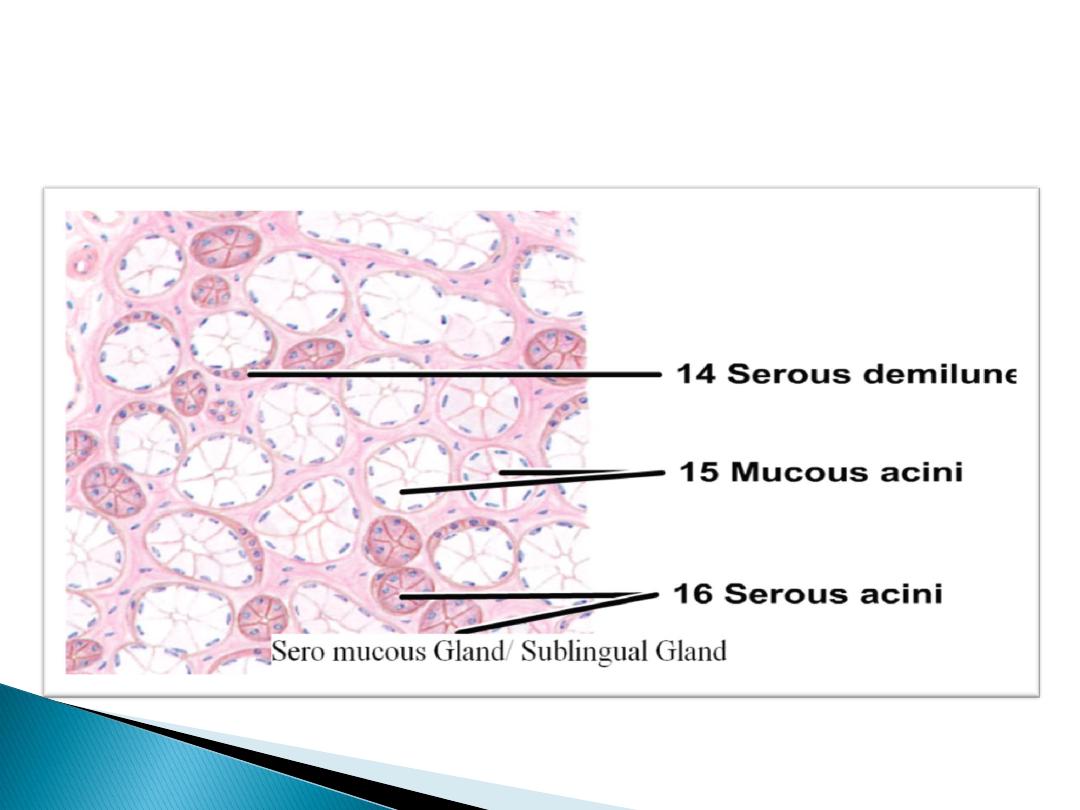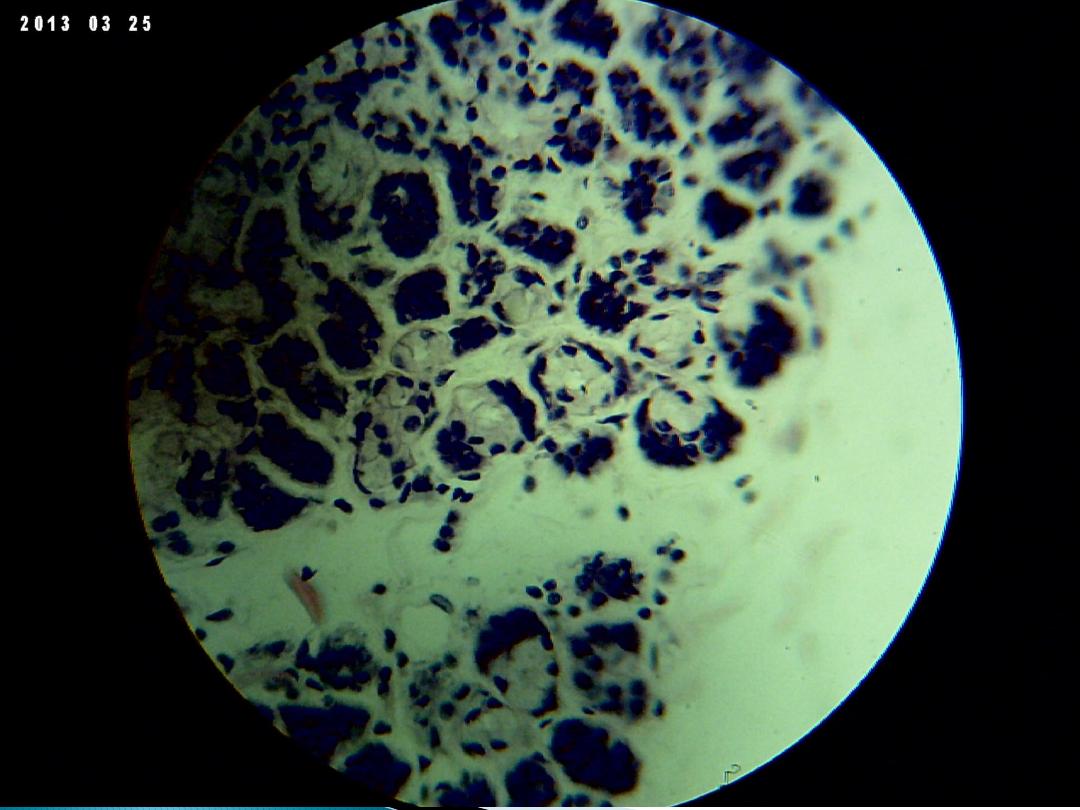
Specialization of the
cell surface
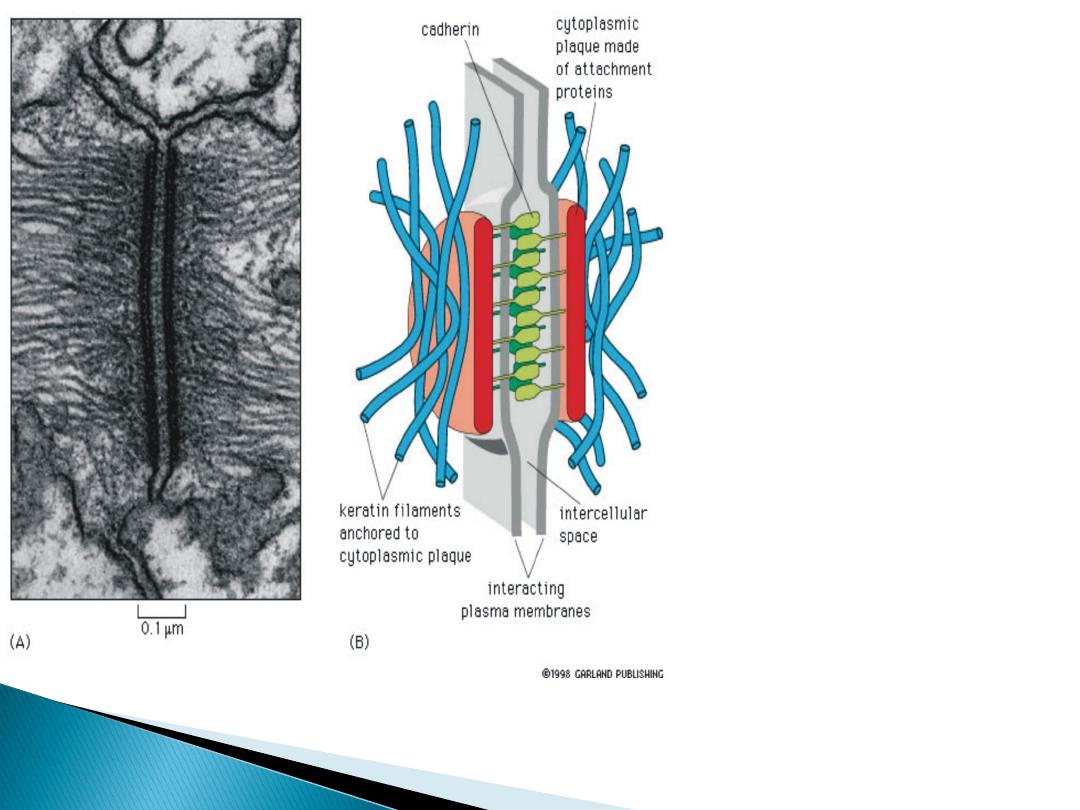
Desmosomes
(Lateral Surface)
Spinosum Stratum in
epidermis of skin
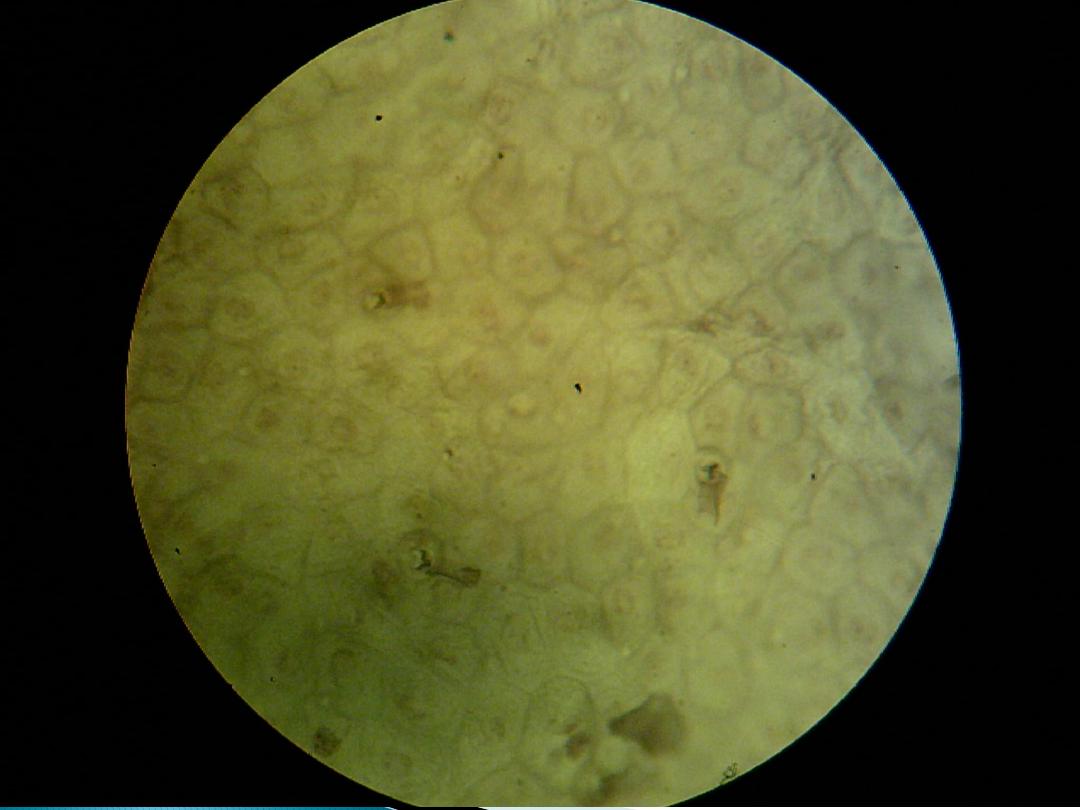

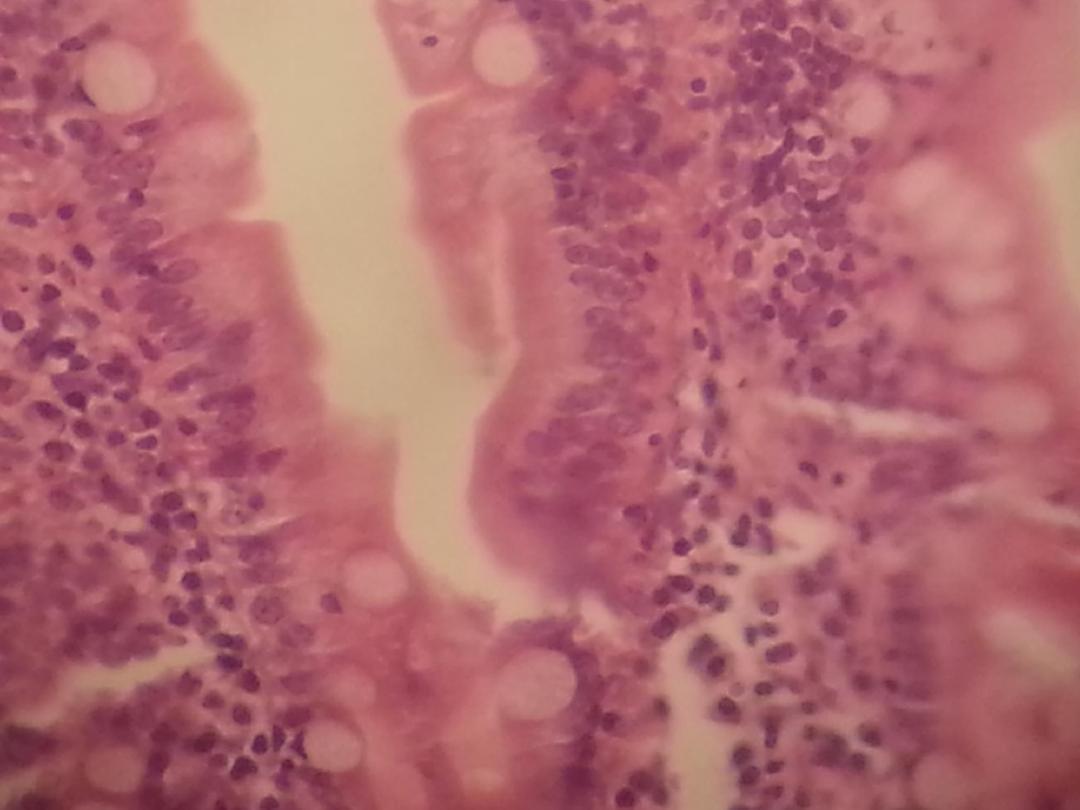
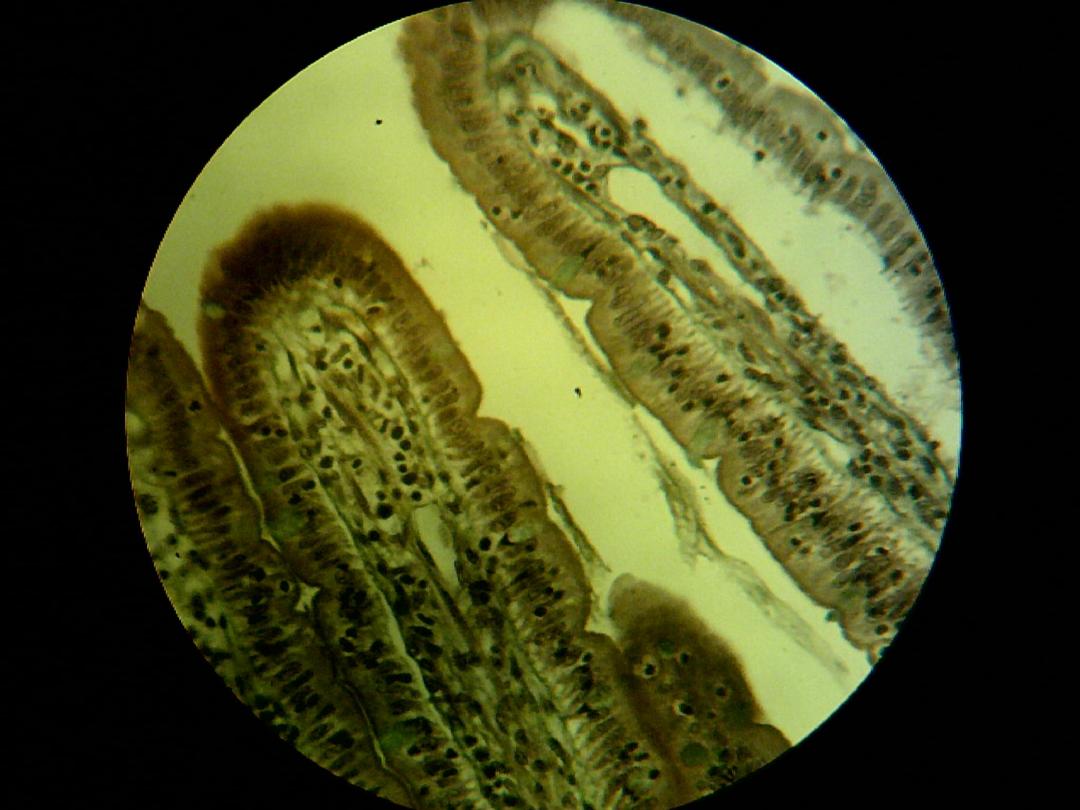
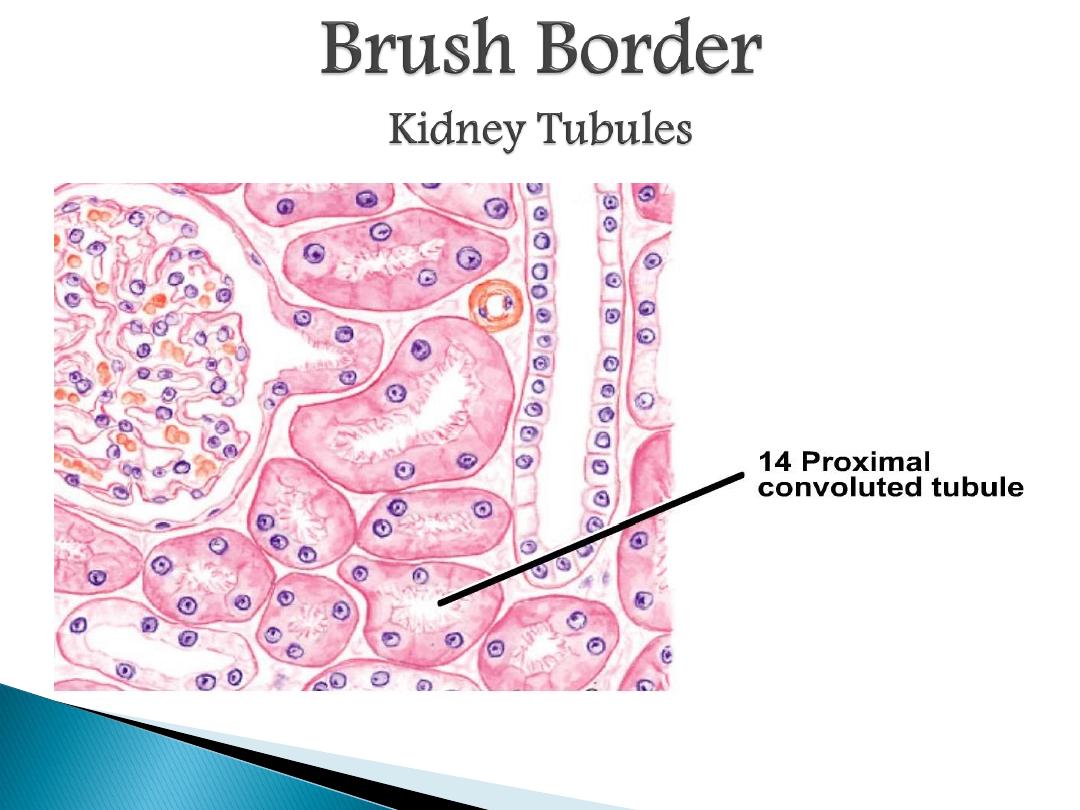
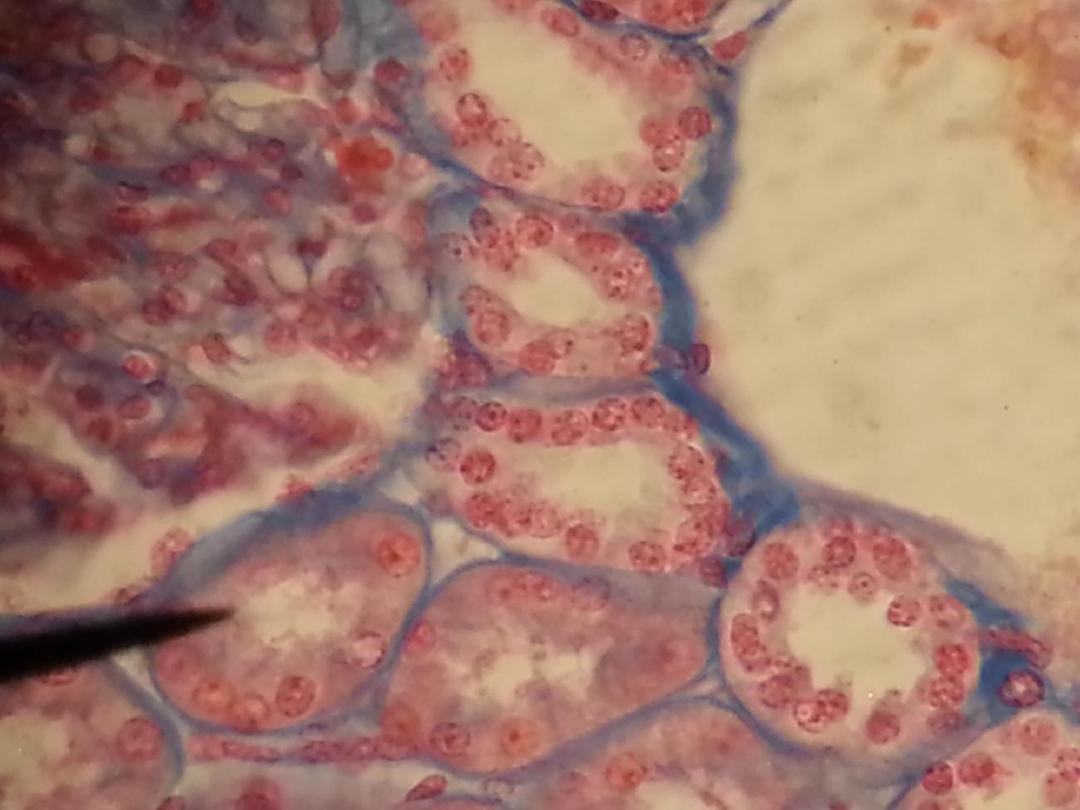
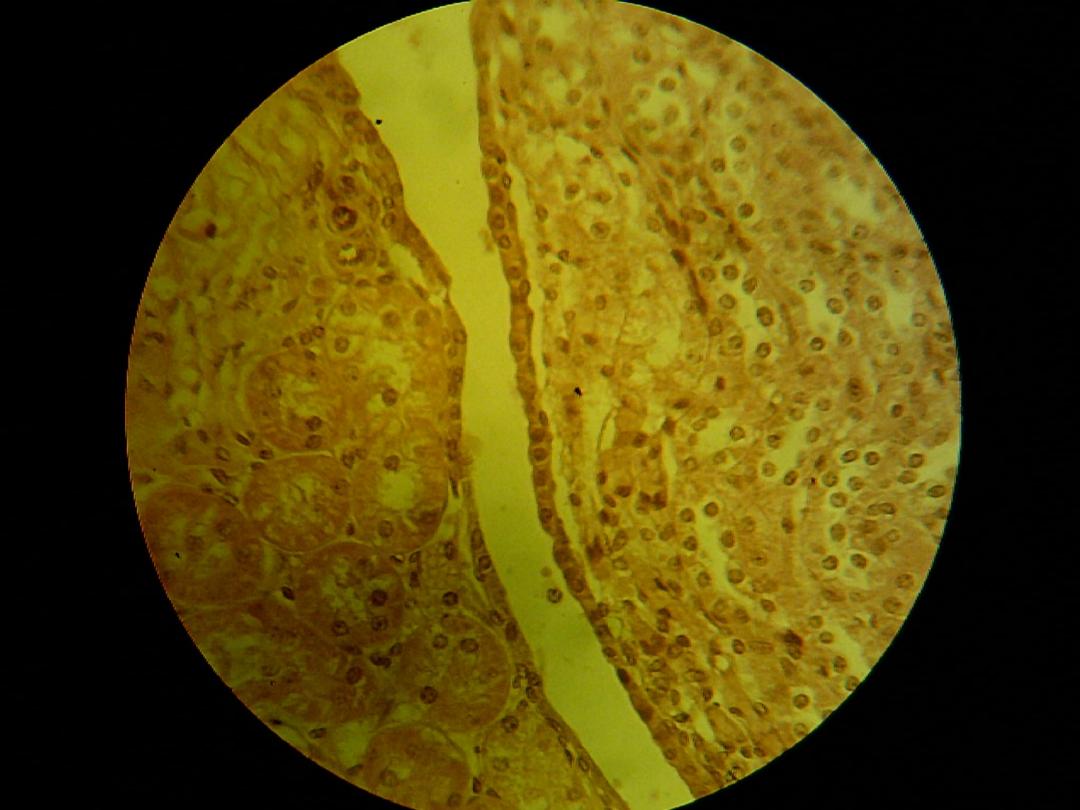

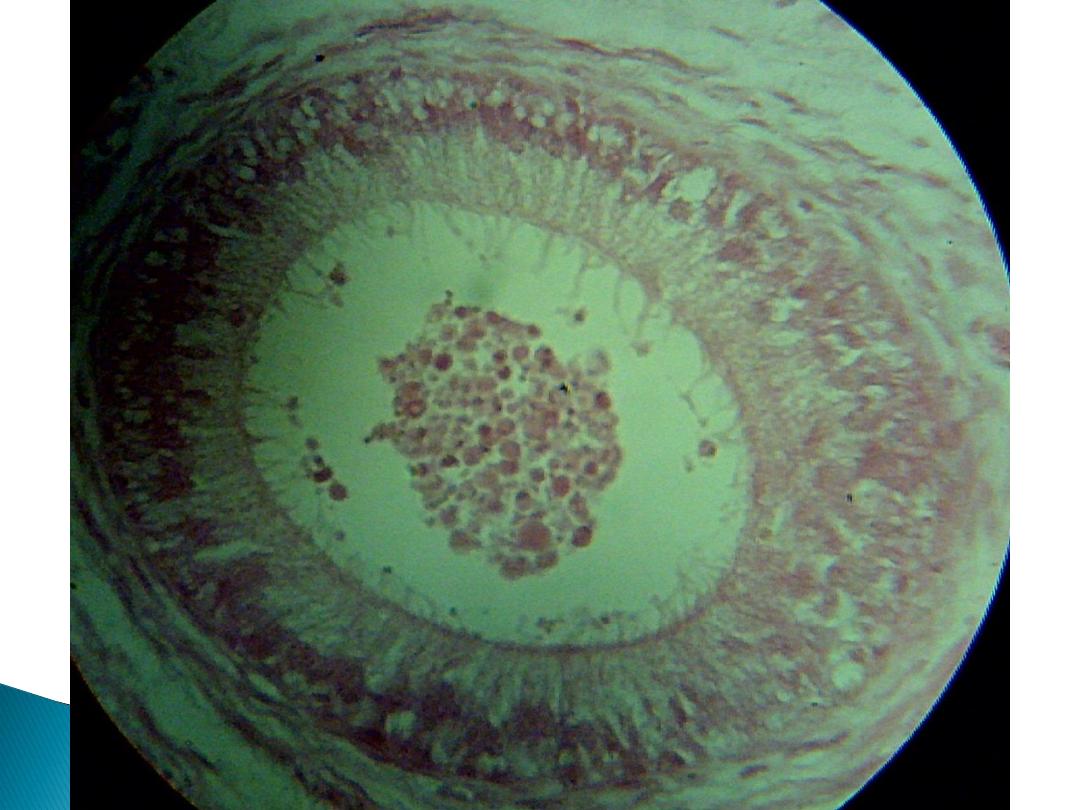


Classification of glands:
According to the way of secretion, it can be:
Exocrine gland
Endocrine gland
Mixed gland

According to the number of cells, we have:
Unicellular gland: consist of one isolated cell
ex: goblet cell in the lining of small intestine
and in respiratory tract.
Multicellular gland : composed of groups of
cells, it consist of two portions:
1- secretory portion 2- duct
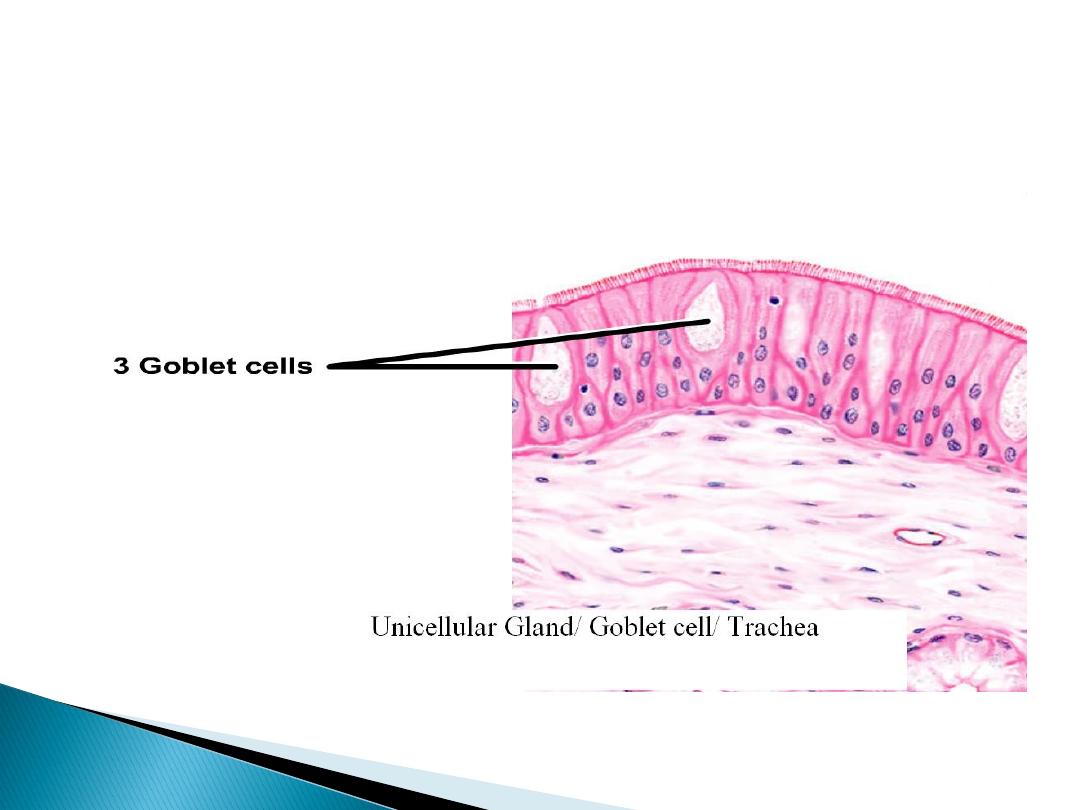
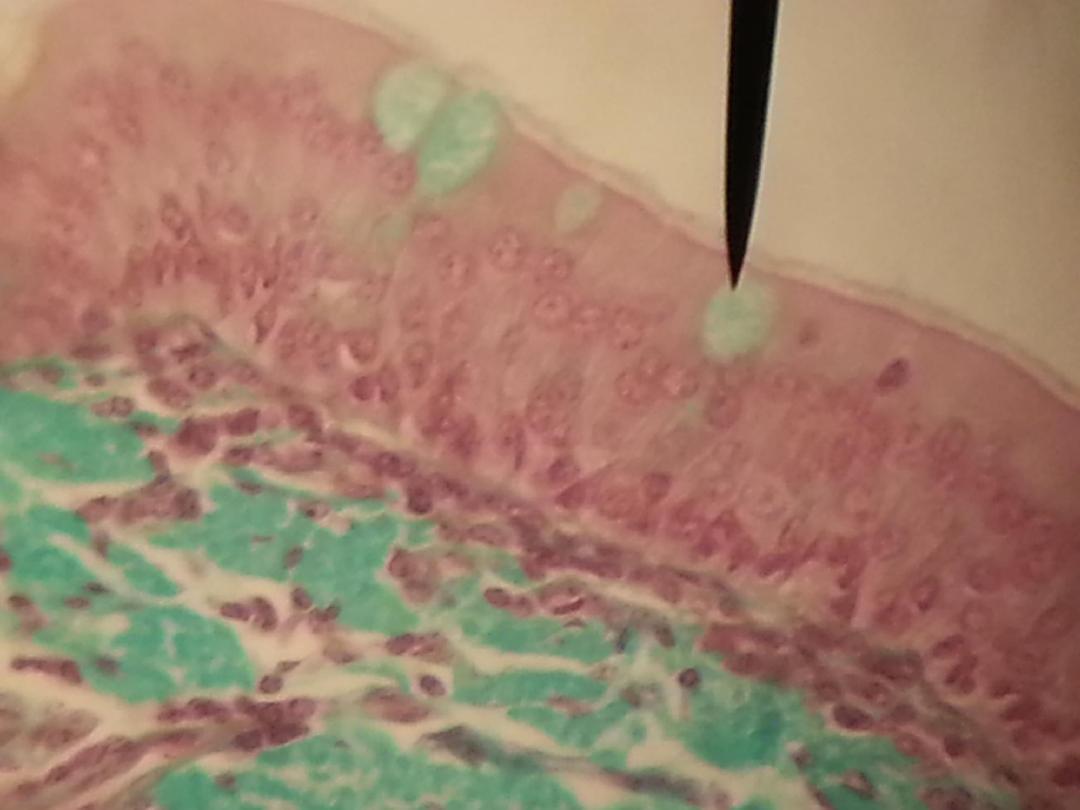

According to the branching of the duct, gland
can be classified into:
Simple glands: have one unbranched duct.
Compound gland: have more than one branch
duct.

Simple glands: can be classified according to
the shape of secretory unit to:-
Tubular :
Straight tubular .ex: crypt of lieberkahn
Coiled tubular. ex: sweat gland
Branched tubular. ex: pyloric gland of
stomach
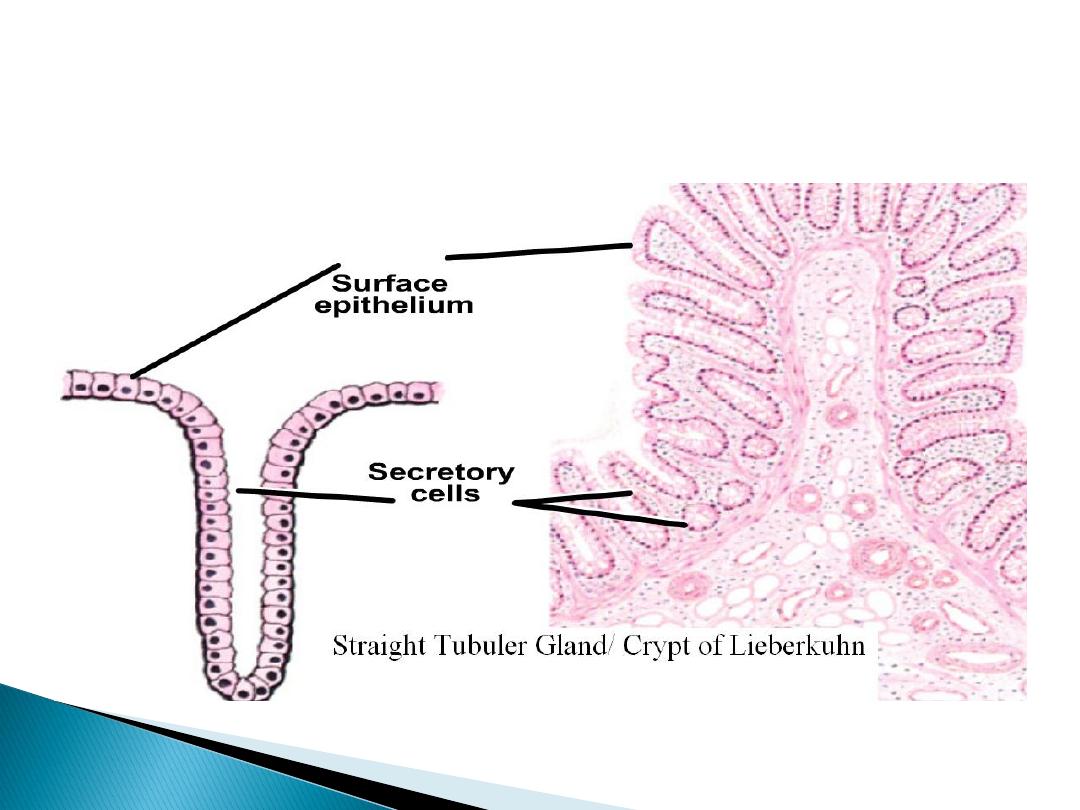
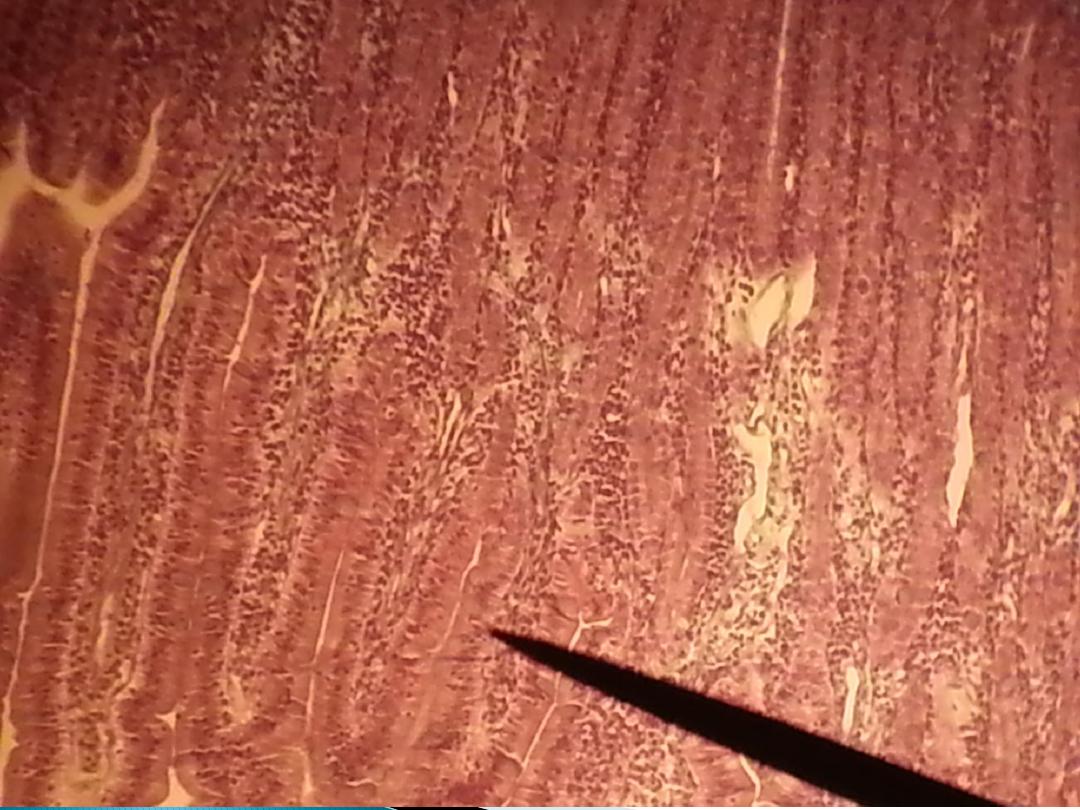
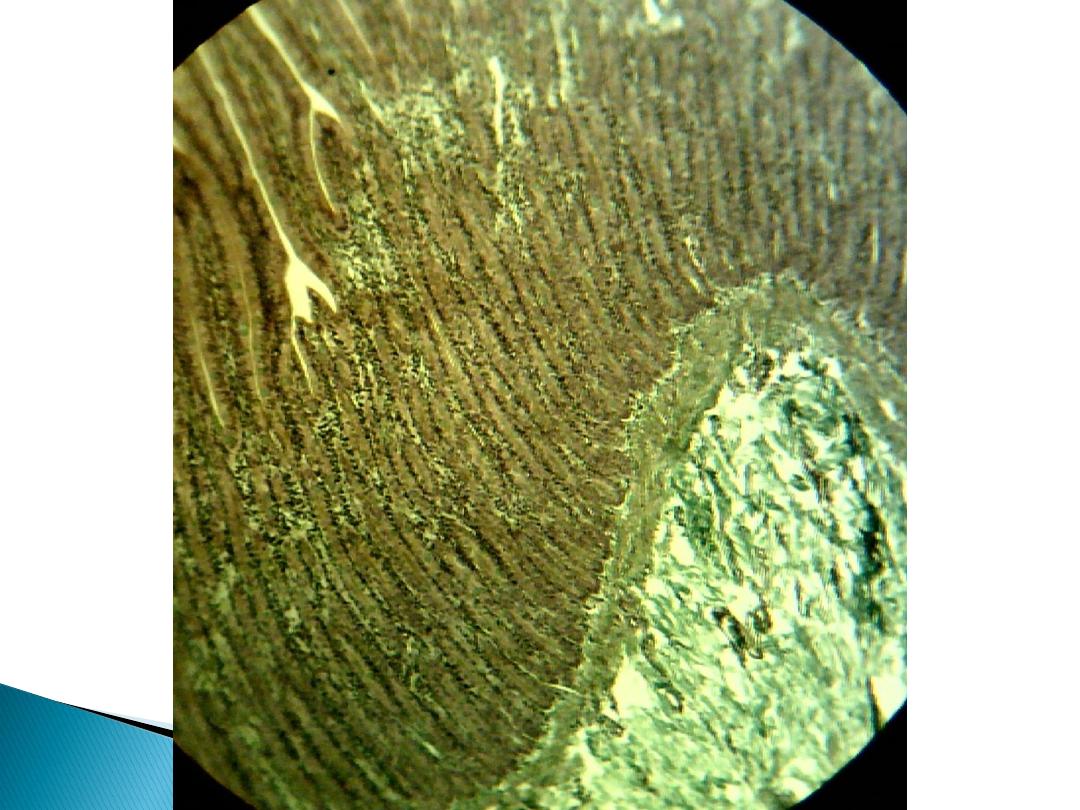
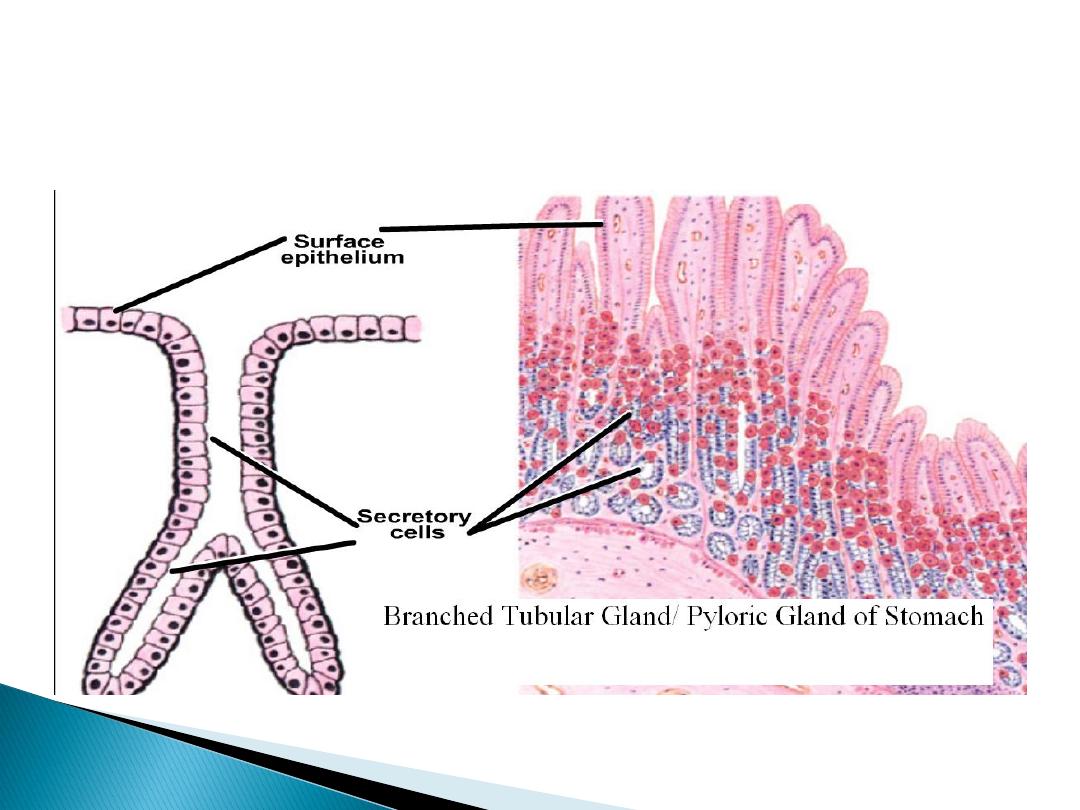
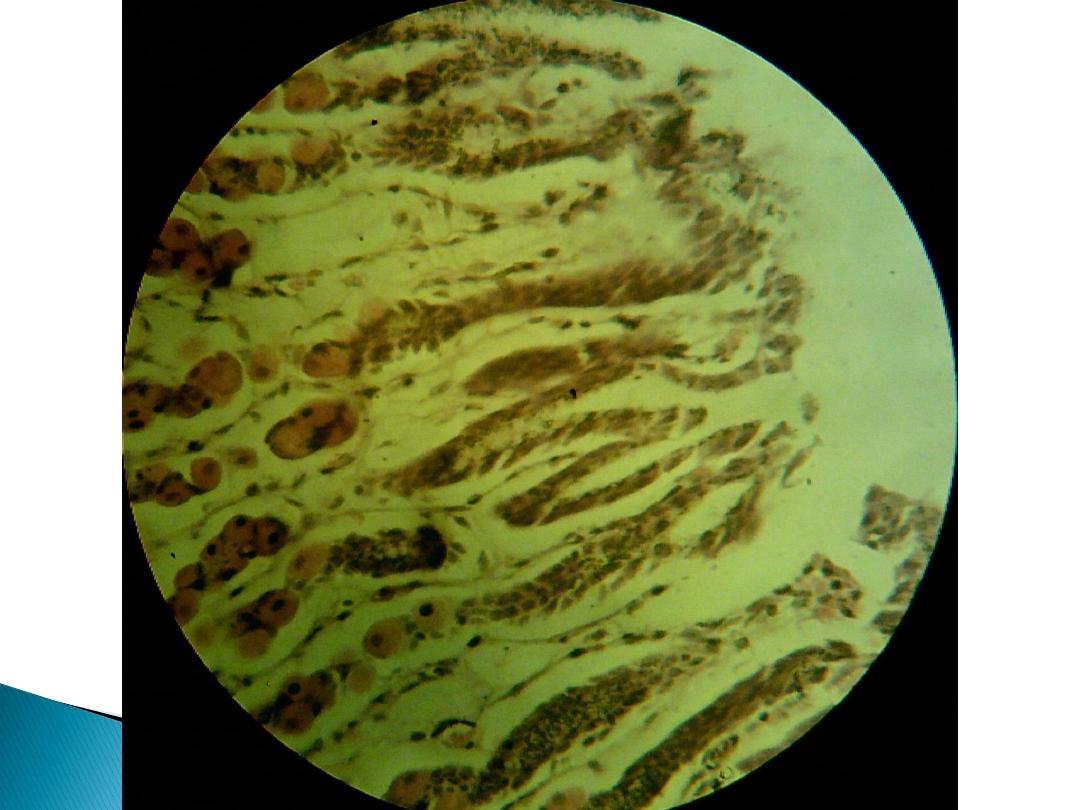
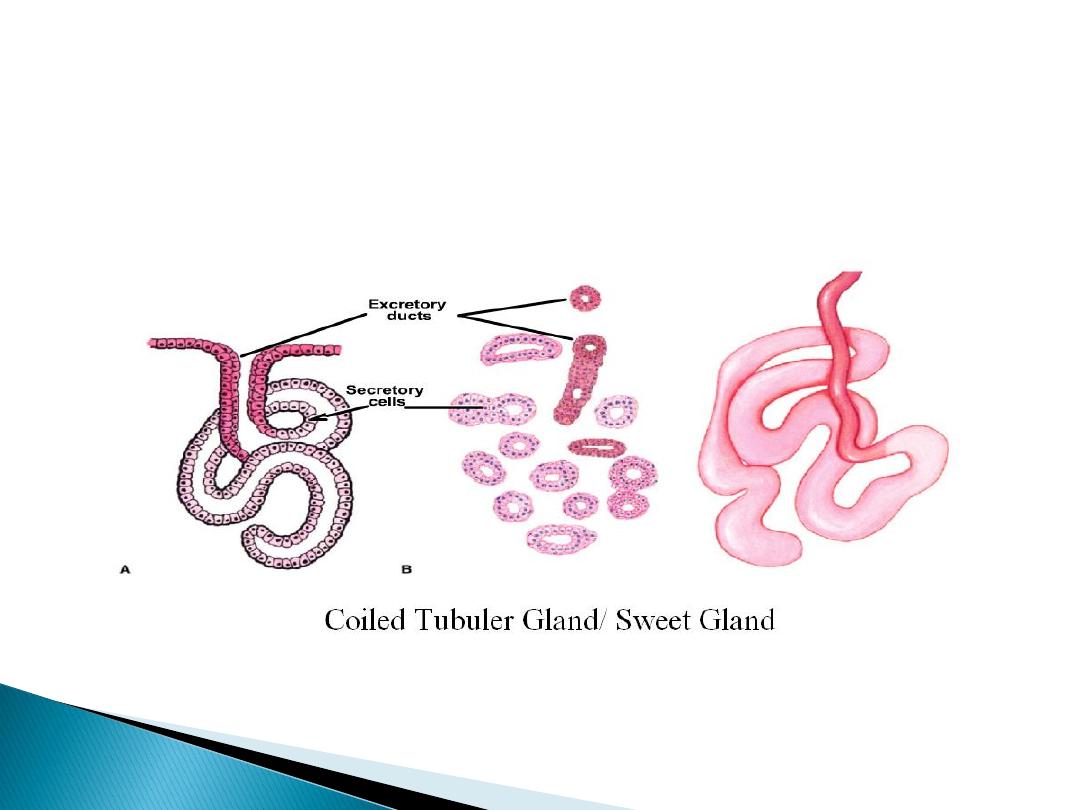
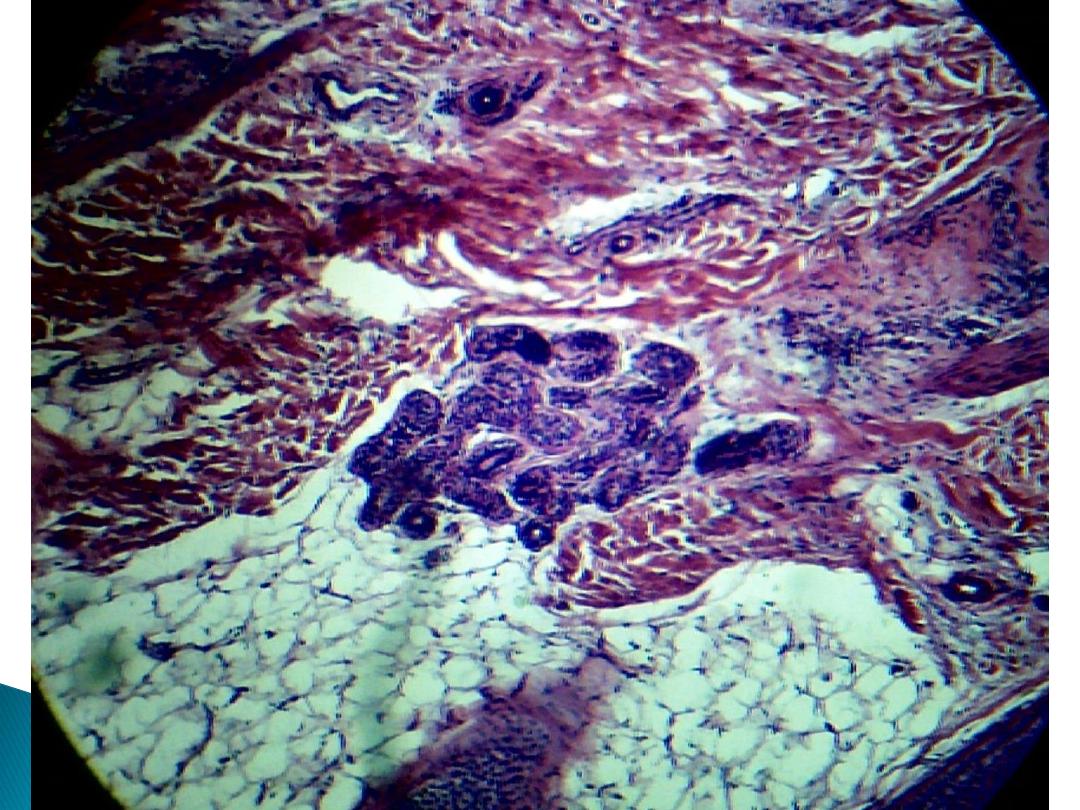
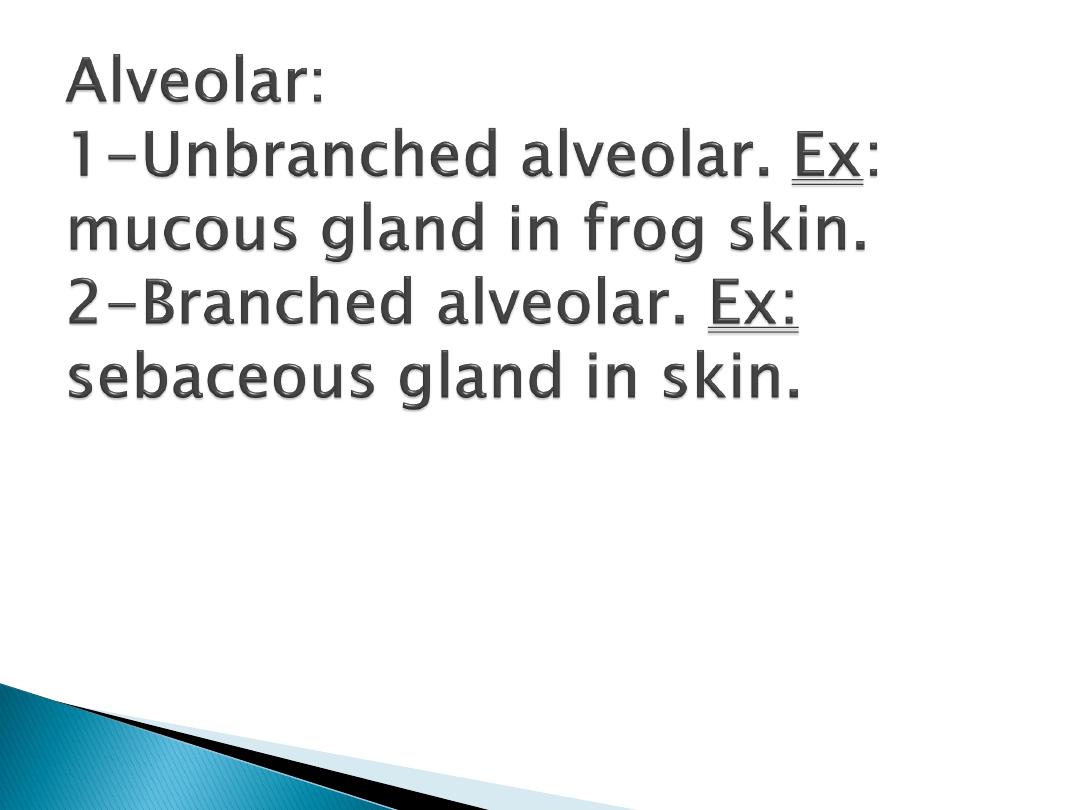
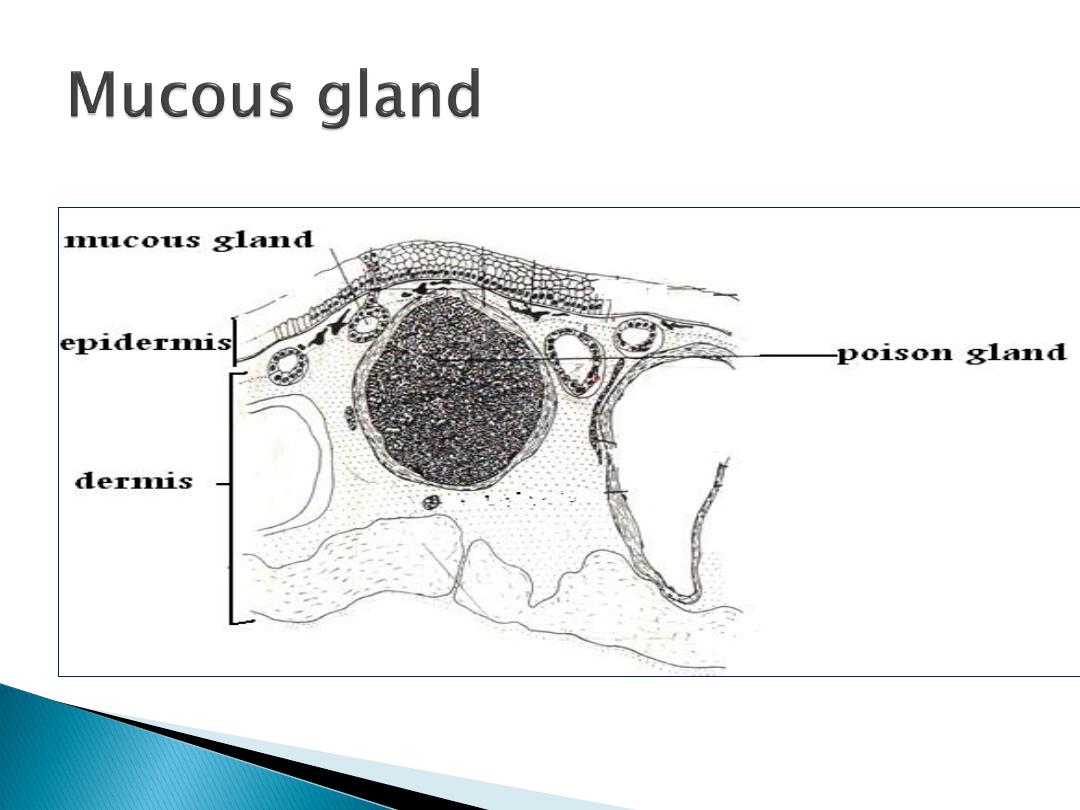
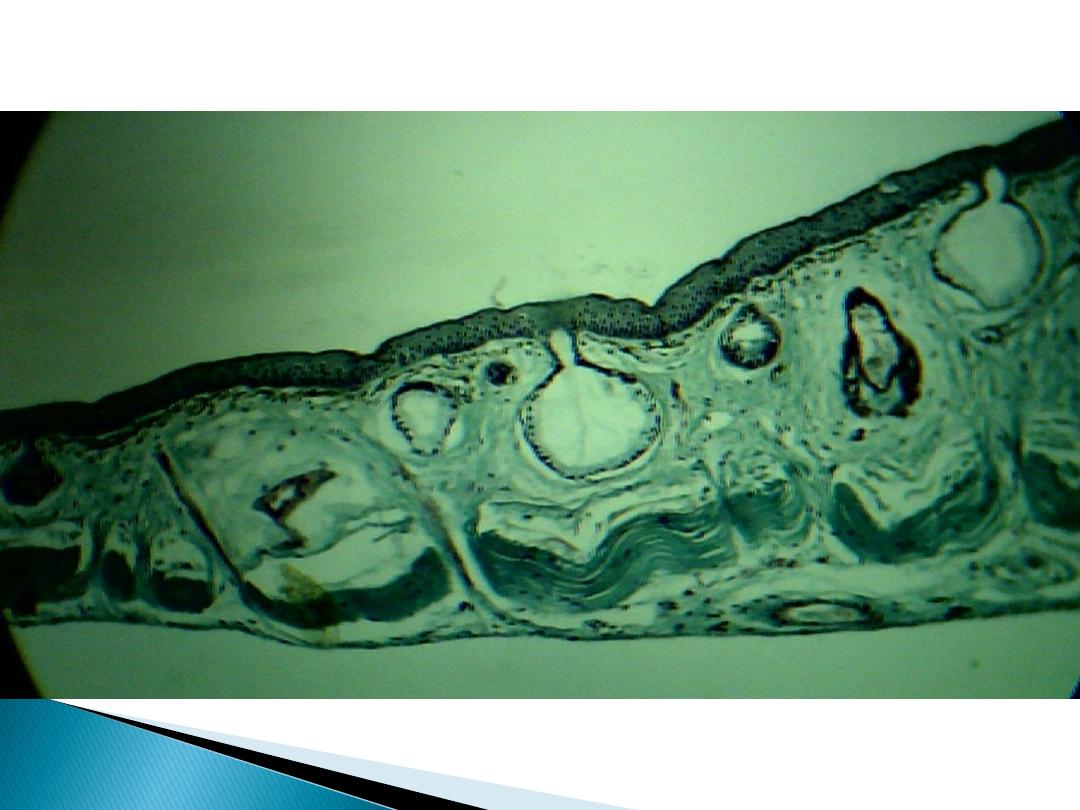
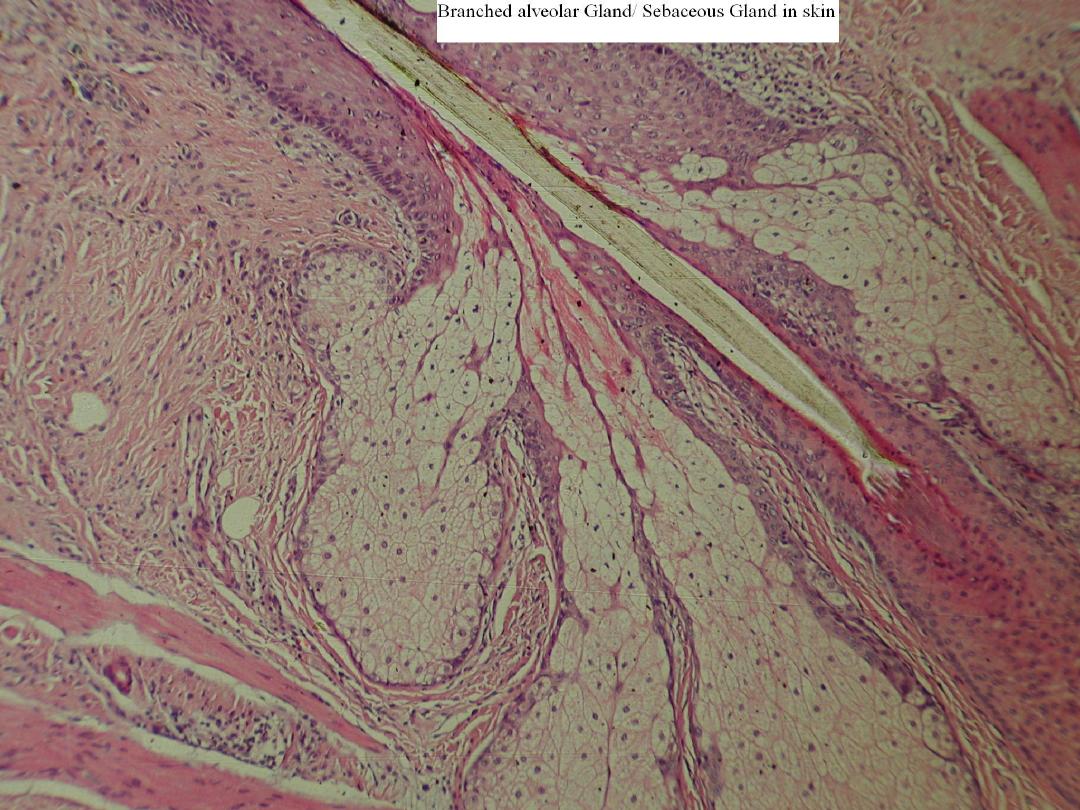

Compound gland: can be classified
according to the shape of secretory unit
to:-
Compound tubular: kidney ,testes
Compound alveolar : mammary gland
Compound tubuloalveolar :salivary gland
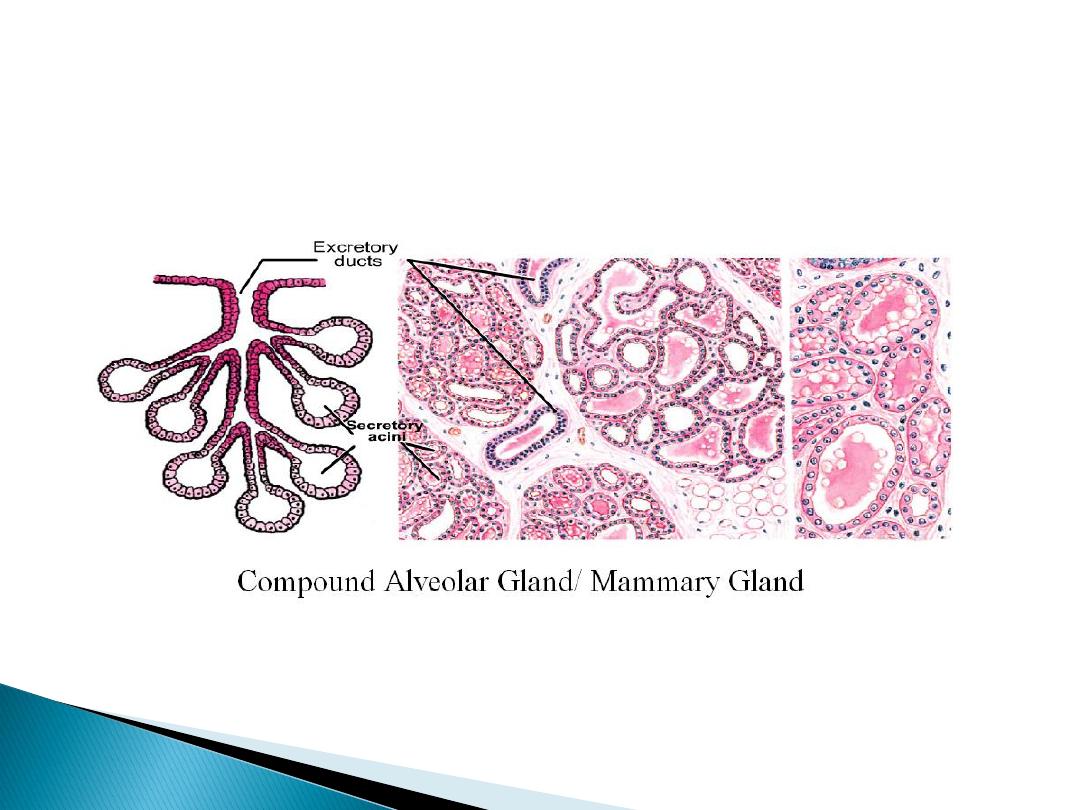
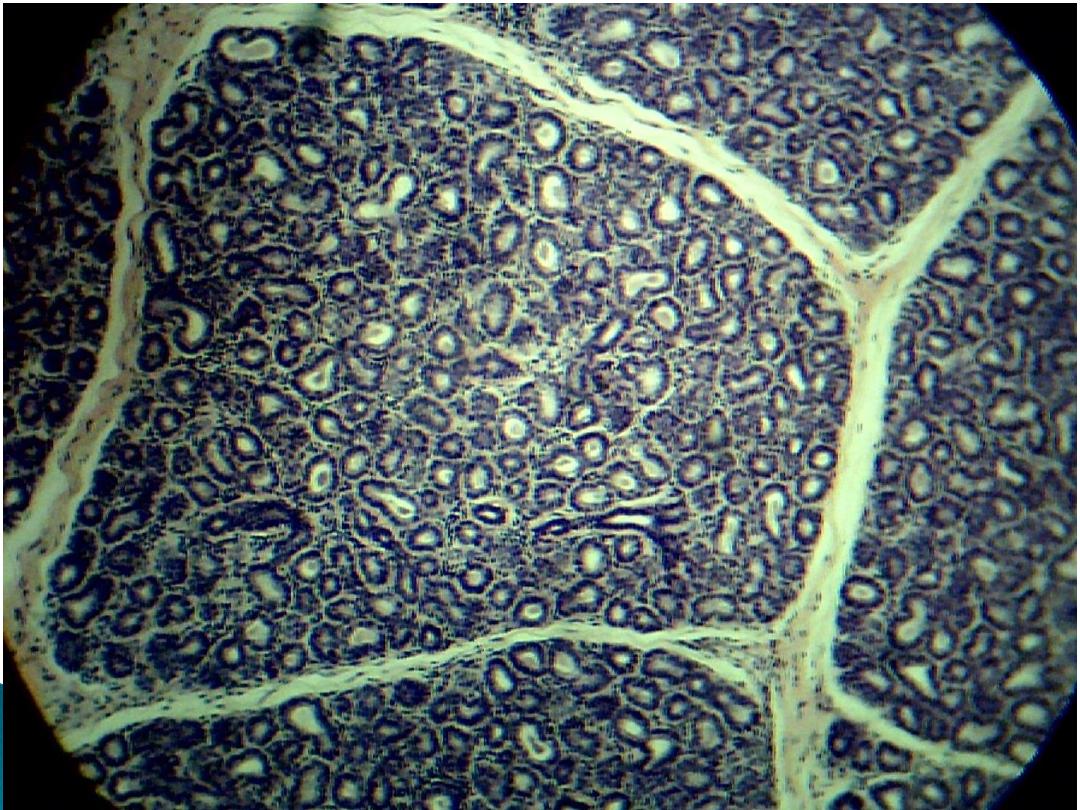
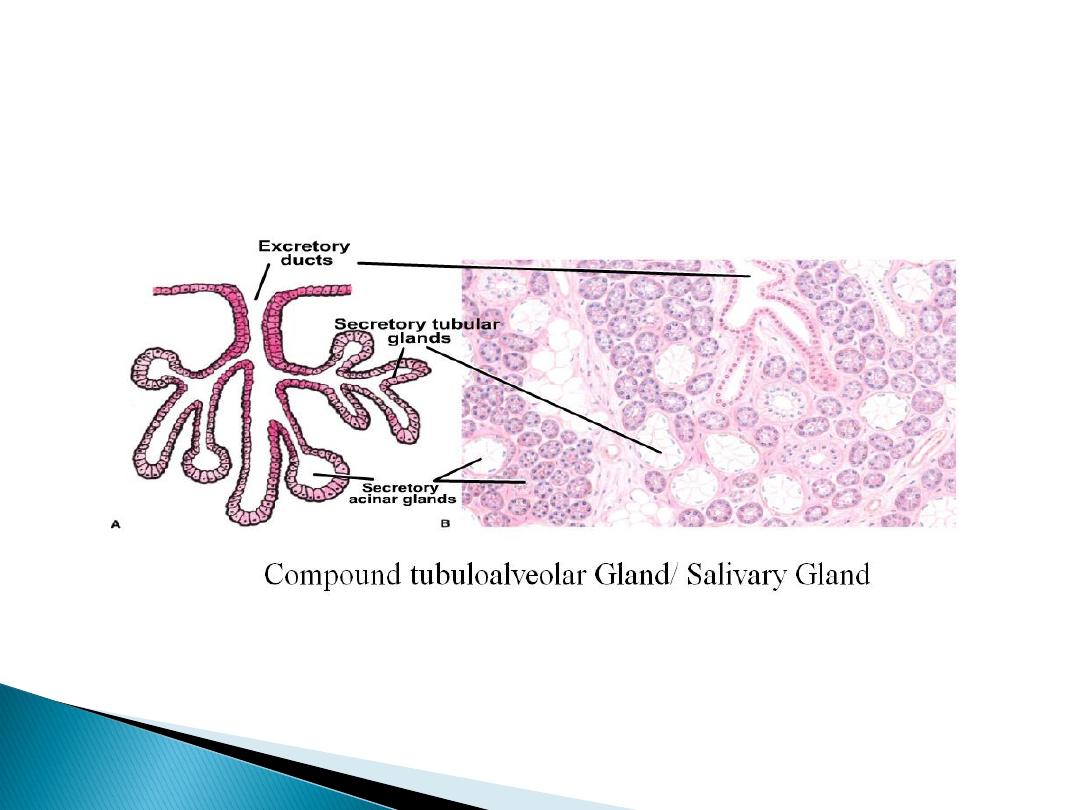
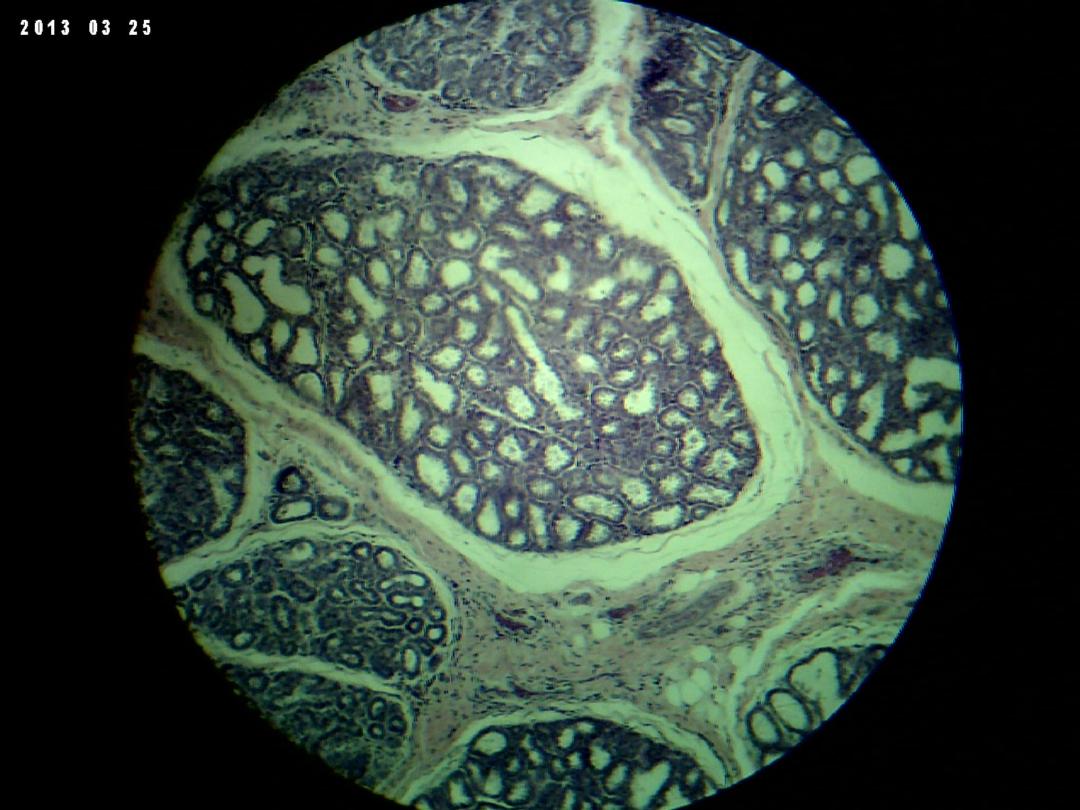
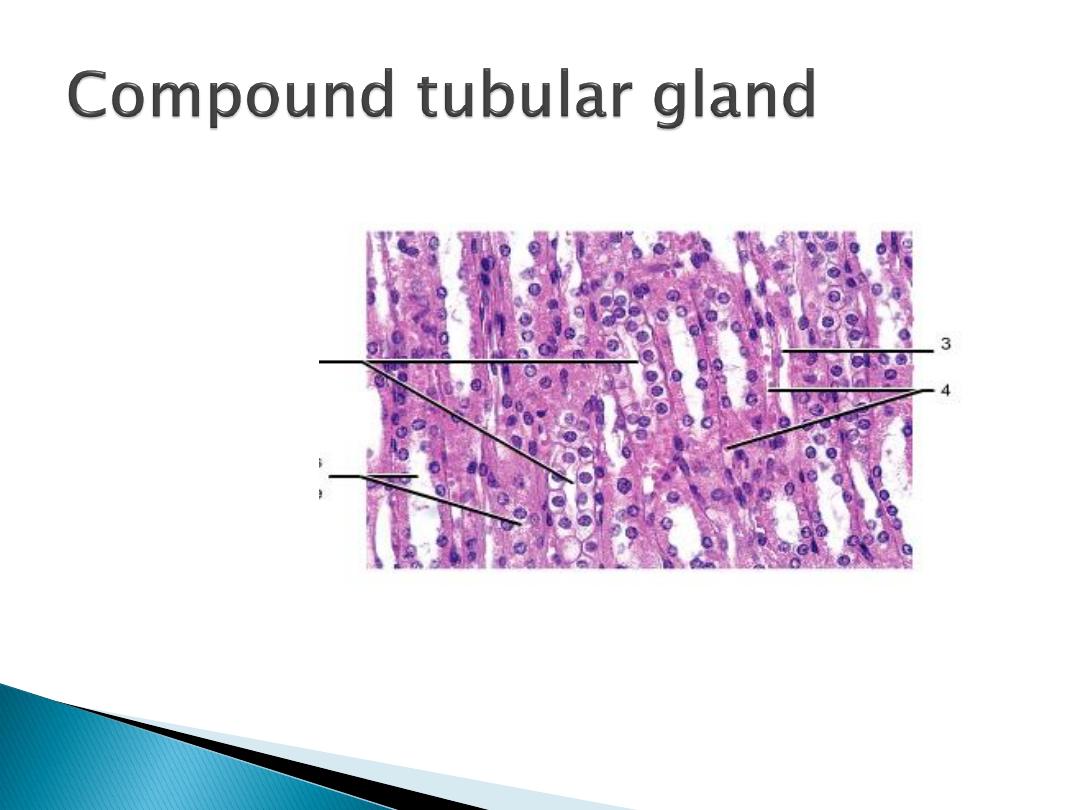
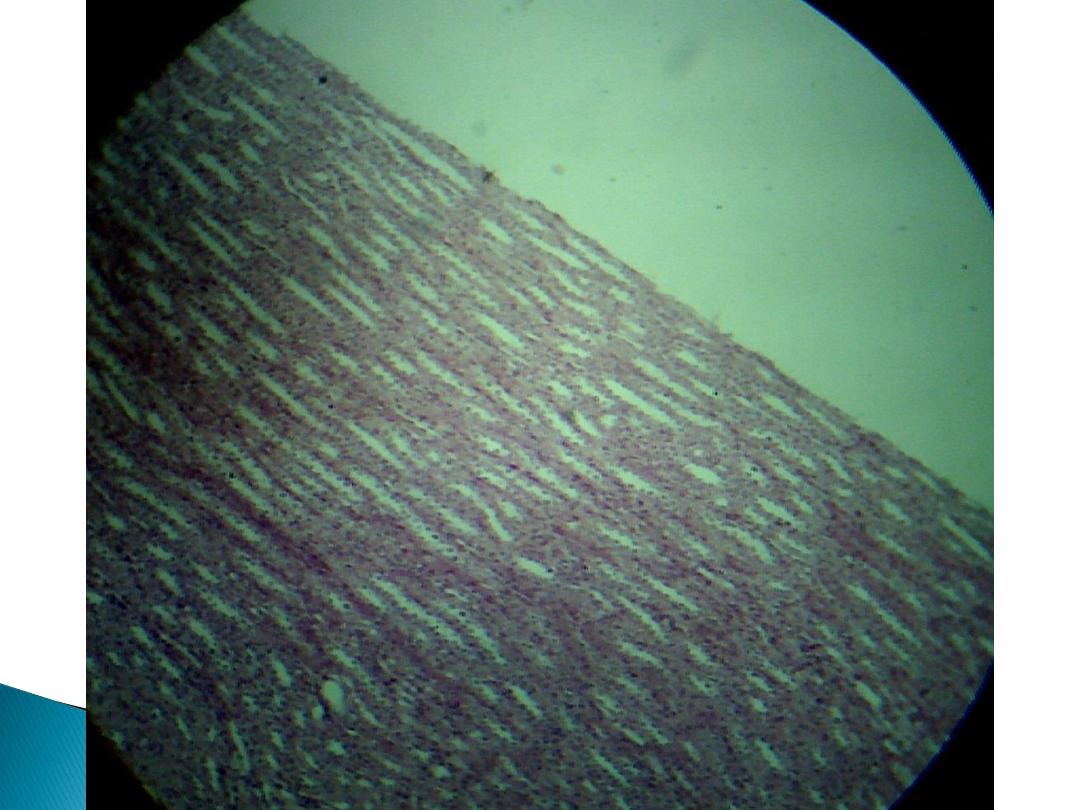

Based on the type of secretory products glands
can be classified into:
Serous gland: pyramidal in shape with central
rounded nuclei, cytoplasm is alkaline; the cavity
of gland is small.
Ex: parotid gland
Mucous gland: larger, lightly staining, the
nucleus is located in the base of the cell; the
cavity is larger than serous gland.
Ex: palatine gland
Sero mucous gland: this gland consist of mucous
portion which has the same properties of mucous
gland, and serous portion as cluster of cells
located in one side of mucous gland and called
serodemilune
Ex: Submandibular gland (Submaxillary gland)
and Sublingual gland
